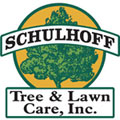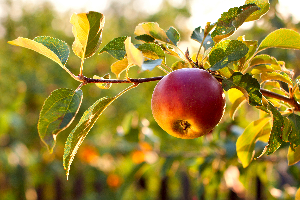“The edible landscape” is a term used to describe the healthy oasis you create when you include food-producing trees and shrubs on your property. Landowners and the community benefit when they install fruit and nut trees in place of purely ornamental trees.
If you worry that Colorado’s unpredictable late freezes are too harsh for tender berries and plums, remember that there are numerous edible trees and shrubs that are native to our region. You can also find non-native fruit trees and shrubs that are specifically bred to bloom late in the season and withstand the cold. You enjoy low-care plants and homegrown treats simply by choosing plants that are suited to your particular location.
Benefits of Edible Landscaping
One of the benefits of edible landscaping is the tree-to-table food process. You can’t get more eco-friendly than picking an apple in your own backyard, immediately rinsing it under the faucet, and taking a juicy bite. Usually, apples are transporting via truck over long distances, burning gasoline. By growing your own produce, you don’t contribute to carbon emissions.
Another benefit of edible landscaping is the control you have over what is fed to and sprayed on your trees and shrubs. You appreciate the security of knowing your homegrown harvests are not coated in questionable herbicides or pesticides.
Kids learn about the process of growing food by watching their own backyard plants through the seasons. Children are often encouraged to be less wasteful with food after seeing how long it takes to grow a piece of fruit. They become more willing to try new garden items when they’re immersed in the edible landscape.
Wildlife also benefit from your edible garden. There will be times when you may not get to those ripe berries or pears. You’re too busy or have a too-abundant harvest one year, but be assured that some hungry rabbit, squirrel, or bird appreciates the extra sustenance. If you live near rapid development or a migration route, the creatures who encounter your property will be enriched by all of the extra calories they get.
Drawbacks of Edible Landscaping
If feeding the wildlife all of your precious fruit isn’t your mission when planting the edible garden, you’ll need to work hard to protect your crops. If you’re growing cherries, you’ll want to use netting or some other barrier to prevent birds from pecking at the fruit. Deer, bear, and other creatures must be deterred or blocked, even in more settled locations. Insect pests and scale must be prevented with safe treatments, soaps, and sprays.
Unfortunately, another drawback can be the mess. When some fruits fall to the ground, they begin to ferment and rot. The smell may be overwhelming if you don’t have lots of hungry wildlife around to chow down on the windfall. You’ll need to clean up under trees after harvest to avoid new seedling sprouting and to avoid pests.
Colorado’s Edible Native Trees and Shrubs
It’s best to consult a native tree and shrub expert to make certain you’re planting safe, non-poisonous varieties of native plants. Your local tree service company works with native plant suppliers and will recommend ethical growers and collectors.
The following two trees grow well in the Colorado area:
- Saskatoon or Utah serviceberry. This shrub grows to 12 feet but is easily pruned back. The berries are delicious and used in baking, jellies, and wines. In spring, the shrubs offer white flowers. Some varieties bloom and set fruit over a long period so you savor the juicy berries for weeks.
- Hawthorn. More like a small tree than a bush, the hawthorn grows up to 30 feet tall. The rose-like, creamy flowers on the hawthorn are a delight. The fruit resembles rose hips and is good fresh or preserved, though the seeds should not be eaten. The hawthorn can be pruned and does have thorns. It’s a great companion plant for the smaller serviceberry.
Other shrubs and trees to consider are the Oregon grape, prairie crabapple, and prickly pear. Pinyon pine, choke cherry, and raspberry plants are also hardy native choices for the edible landscape.
Edible Plants for Autumn Color
If you want more pizzazz from your edible plants, install trees and shrubs that offer autumn interest. Mulberry leaves have gorgeous yellow fall color and make great shade trees when pruned correctly. Plums also display golden leaves in autumn and can be trained into interesting growth habits.
Other fall stunners in the edible class (and their autumn hues) include:
- Cherry
- Honeyberry
- Blueberry
Accent your edible trees and shrubs with edible flowers including pansies, nasturtiums, and violets in season. Pansies are more suitable for cooler months, while the other two flowers are summer and spring bloomers.
The tree and shrub experts at Schulhoff Tree & Lawn Care, Inc. are happy to help you get your own edible oasis established. Call us today to learn more about cultivating a landscape that feeds your body and spirit.

